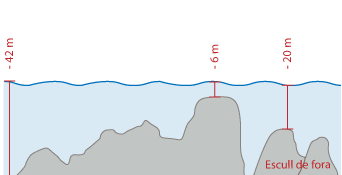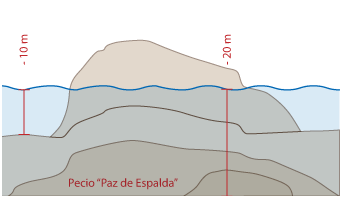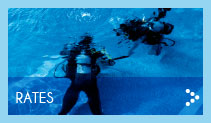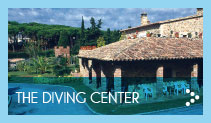Come and make dives with
SNORKEL® Diving Center
Come and make dives with
SNORKEL® Diving Center
Diving Points
Les Formigues
Travelling time : 20 minutes.
Length of dive: 20 minutes They are located in front of the Calella and Llafranc bays, at the level of Cap de Planas.
Tlaque beside the lighthouse which commemorates the victory of Admiral Roger de Lauria, fighting for King Pere el Gran, over the invading forces of the French King Philip l'Ardit in the summer of 1285 when he sank more than seventeen of the French ships is still visible.
The wreck of the Spanish collier, Paz de Espalza, which sank in 1921 is at a depth of only 17 metres and the Roman wreck of the Formigas Islands at 42 metres amongst other things show that these small islands have been the site of innumerable naval battles.

It is the ideal site to plan several dives:
Escull de Fora
Starting from a rock at a depth of 6 metres, and then going East along a ridge covered with red gorgonia (Paramucea clavata) and full of groupers (Epiphelus guaza), white sea bream (Diplodus sargus), lobsters (Palinurus elephas) you pass through a narrow tunnel 11 meters long and decorated with red coral (Corallium rubrum), to reach a depth of 42 metres.
Also, if you wish, you can start from the same place going to the coast (West) where you will be diving amongst enormous rocks, accompanied by white gorgonias (Eunicella singularis) white sea bream (Diplodus sargus), corvinas (Argyrosomus reglus), combers (Serranus cabrilla), octopuses (Octopus vulgaris), etc.,
To a depth of no more than 20 metres.

Pecio "Paz de Espalza"
According to a popular rumour this collier ran aground on the night of December 24, 1921 because the crew got drunk whilst celebrating Christmas Eve.
The cargo was removed and it was sunk by dynamite. The wreck is on top of another steamer that sank at the end of the last century, although no details are known.
The wreck of the collier lies at a depth of 17 metres on a bed of posidonia (Posidonia oceanica) and where there are conger eels (Conger conger), morays (Muraena helena), long striped wrasse (Crenilabrus ocellatus), damselfish (Chromis chromis), octopuses (Octopus vulgaris) etc.
The bottom around it has large rocks, passageways and fissures visited by giltheads (Sparus auratus) white sea bream (Diplodus sargus), common dentex (Dentex dentex).
The maximum depth is 20 metres.







